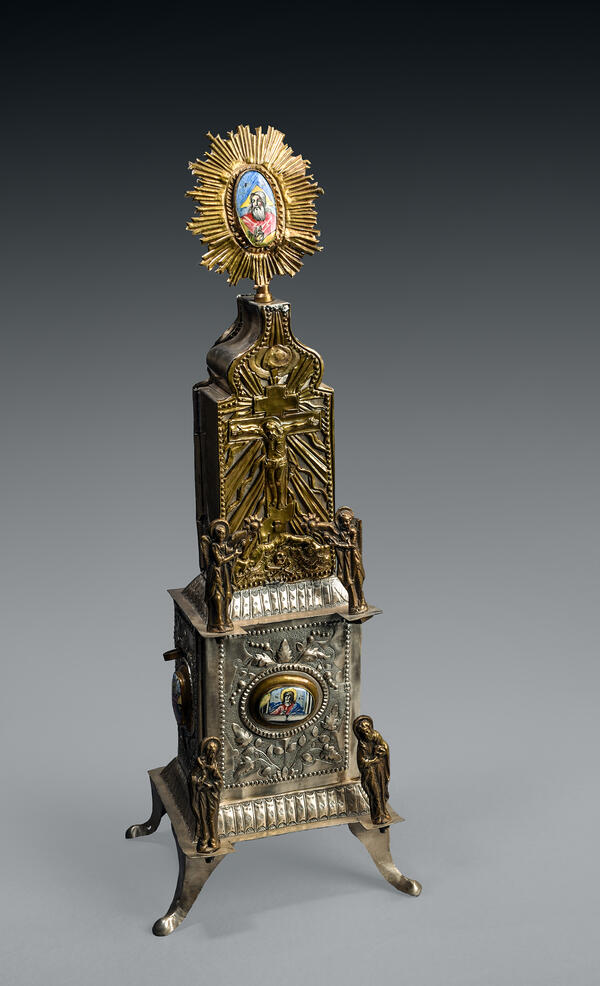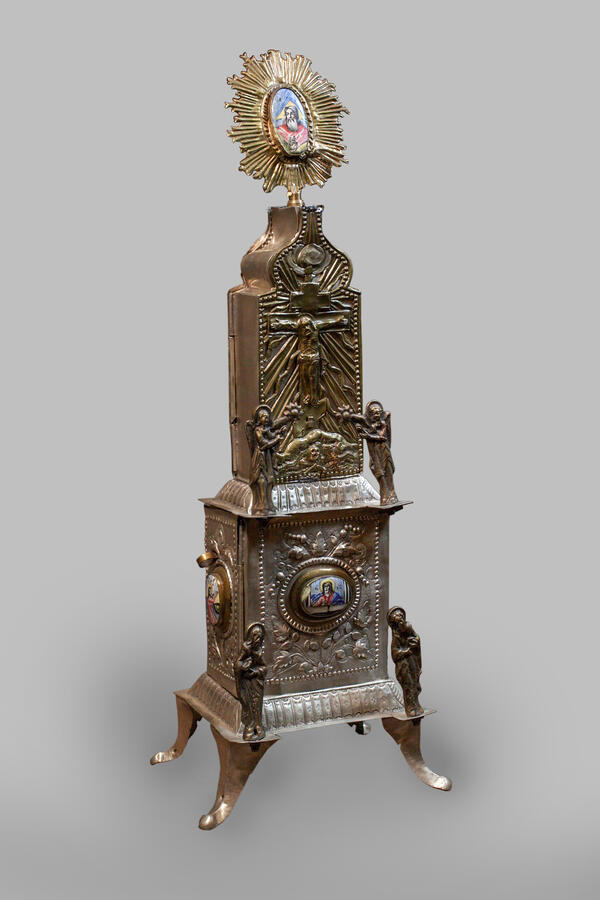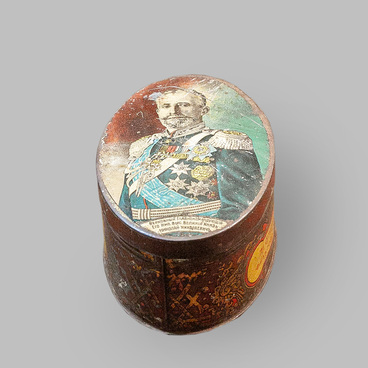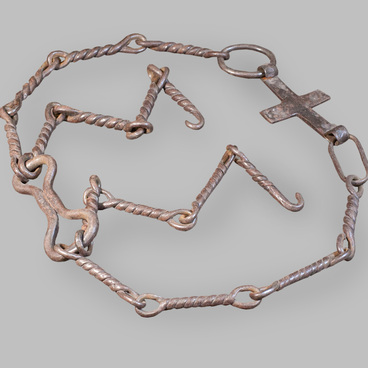The monstrance is a vessel for keeping the main sacred objects of a Christian church, a kind of holy of holies, almost a temple inside a temple. That is why the monstrance is often made in the form of a stylized temple crowned with a cross. The holy sacraments stored in the monstrance symbolize the flesh and blood of Jesus Christ. They are used in the sacrament of communion, or Eucharist. There are also small portable monstrances.
The monstrance, standing on the altar stone with the Royal Doors open, is visible to everyone inside the church, which is why it is decorated splendidly. It could feature gemstones and icons. Before the 1917 revolution, parishes were recommended to have gold or silver monstrances, and in the case of a lack of funding — tin ones.
The Diorama Museum and Exhibition Center houses a monstrance in the form of a temple decorated with floral patterns. The structure is crowned with the icon of the Lord of Hosts making a blessing gesture in the rays of glory. In the lower part of the monstrance and in the medallions on the sides, there are icons of Jesus Christ. In the center is a crucifix, in the lower part on the sides are two statues of angels, and below are two statues of Saints.
Until the early 20th century, the monstrance was located in the Assumption Cathedral of the Tryphonov Monastery. The monastery was one of the first ones in the Vyatka region. It was founded by the Saint Tryphon of Vyatka (secular name — Trofim Dmitriyevich Podvizayev). With the help of generous donations and income from the lands granted to the monastery by the Tsar, Tryphon was able to build four churches in the monastery — those of the Annunciation, the Assumption, John the Baptist, and St. Nicholas (the gate church). The monastery engaged in missionary, economic, and educational activities. According to the ancient Russian tradition, new churches were built on the site of the old ones. The first stone building of the ensemble, the Assumption Cathedral, was founded by Iona Baranov in 1684.
In 1690, the relics of Saint Tryphon were transferred to the cathedral, and a tombstone with a reliquary was placed above the grave. Today, the Assumption Cathedral of the Tryphonov Monastery is the oldest surviving stone building in Kirov.
The monstrance, standing on the altar stone with the Royal Doors open, is visible to everyone inside the church, which is why it is decorated splendidly. It could feature gemstones and icons. Before the 1917 revolution, parishes were recommended to have gold or silver monstrances, and in the case of a lack of funding — tin ones.
The Diorama Museum and Exhibition Center houses a monstrance in the form of a temple decorated with floral patterns. The structure is crowned with the icon of the Lord of Hosts making a blessing gesture in the rays of glory. In the lower part of the monstrance and in the medallions on the sides, there are icons of Jesus Christ. In the center is a crucifix, in the lower part on the sides are two statues of angels, and below are two statues of Saints.
Until the early 20th century, the monstrance was located in the Assumption Cathedral of the Tryphonov Monastery. The monastery was one of the first ones in the Vyatka region. It was founded by the Saint Tryphon of Vyatka (secular name — Trofim Dmitriyevich Podvizayev). With the help of generous donations and income from the lands granted to the monastery by the Tsar, Tryphon was able to build four churches in the monastery — those of the Annunciation, the Assumption, John the Baptist, and St. Nicholas (the gate church). The monastery engaged in missionary, economic, and educational activities. According to the ancient Russian tradition, new churches were built on the site of the old ones. The first stone building of the ensemble, the Assumption Cathedral, was founded by Iona Baranov in 1684.
In 1690, the relics of Saint Tryphon were transferred to the cathedral, and a tombstone with a reliquary was placed above the grave. Today, the Assumption Cathedral of the Tryphonov Monastery is the oldest surviving stone building in Kirov.






